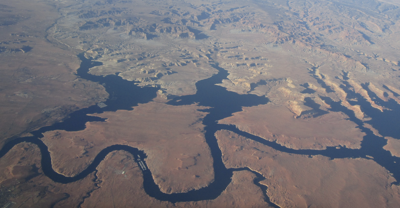If you depend on water in this state — wait for it — then you should be a little disappointed in how economic relief was divvied up during the last legislative session.
A lot of good causes got much-needed, long-awaited money, but not all Colorado’s needs got equal or fair treatment.
Exhibit A: the Colorado Water Plan.
A little history: It was a crowning achievement of the Hickenlooper administration, but it turned out to be a headpiece without jewels, because no money was attached to it to address keeping water in streams, shoring up dams, storing and conserving the state's most precious resource.
The water plan was completed in 2015 with an annual IOU of $100 million a year until 2050. Six years later it's still waiting for a steady flow of financial aid, while it plays the legislative lottery.
Colorado's water crisis is partially the result of climate change and partly population change, but either way Colorado hardly has enough water now. As cities get bigger and droughts last longer, we'll be mighty thirsty before the snow skiing melts.
At the end of the last legislative session, my colleague and pal Pat Poblete asked legislative leadership the $100 million question: why so little out of so much stimulus?
Colorado received $3.8 billion in the federal pandemic relief, and state lawmakers pitched in another $800 million. The water plan's share so far? Twenty million bucks, and that's the high-water mark for the water plan so far.
That’s like finding $230 on the street and using a buck for a bottle of water. That’s what water solutions were worth to the General Assembly.
One of many things I like about House Speaker Alec Garnett is he’s a glass-half-full kind of guy.
“You're right," he replied to Pat, pivoting. "When it comes to the investment in the Colorado Water Plan, this is the biggest investment from the General Assembly that we have seen.
"It's not the first, but it's the second, and it's the biggest. I think in the past, what we've talked about is trying to invest as much from the General Fund (budget) as we can into the water plan.”
The dollar dance continued: “You know, it's going to be a patchwork of funding streams that are going to have to continue to go towards funding our water plan in the future in order to meet the need on an annual basis."
Such as? He didn't say.
Statewide voters passed a 10% tax that legalized sports betting in 2019. In January my friend Saja Hindi at the Denver Post discovered bets were way down last year, and because of bureaucratic shuffles, gamblers weren't expected to send a drop down to the rivers this year.
Garnett said the Colorado Water Conservation Board has been efficient, so the money it has in the bank aligns with the projects it can handle right now.
“I think in the future you'll see the General Assembly continuing to try to invest, when we can, in the Colorado Water Plan, and then strategizing about long-term solutions to make sure we have, you know, more dedicated revenue going to the plan,” he said.
There's still a chance. A bulk of the federal money is to be parceled out by special legislative committees assigned the respective tasks. A committee could take a fancy to the water plan, but there's no committee assigned to water.
How long of a term do we have? The Colorado River system is failing before our eyes right now, and the legal environment grows more toxic with each day it doesn’t rain or snow in the West.
Lake Powell and Lake Mead, the twin reservoirs for Colorado River water, are both at about 34% of their capacity, the lowest in decades, and the outlook isn't bright. That could put Colorado into a seven-state legal fight, so the extra money could come in handy to pay lawyers.
Solutions aren't cheap, either. Six years ago the water plan called for investing in household graywater recycling, which would reuse clean-enough water from, say, showering to flush toilets and water lawns.
Using graywater could cut use and bills 25%. A pilot project is under way in Denver with 40 homes, while we continue to flush away our future in the meantime.
Credit lawmakers this year for setting aside up to $25 million for watershed restoration related to last year's wildfires, and up to $5 million for farmers and ranchers for drought relief and response.
That's a forecast of the money we'll pay for failing to act on climate change.
Lawmakers this year invested $734 million toward a goal of putting a million electric vehicles on Colorado roads by 2030. The money includes $310 million for charging stations and rebates for low-income car buyers.
It's a good thing they don't run on water.
We can continue to do what we have done: complain, promise and dry up farms and mountain streams.
Every candidate worth a Palisade peach talks about water, especially when they campaign on the rightfully worried West Slope. Gov. Jared Polis, our greenest governor, seems to think of water as a rural issue, if he thinks of it at all.
Here's my half-full glass. With our muddy priorities, there won't be enough water for drinking or fighting.







(0) comments
Welcome to the discussion.
Log In
Keep it Clean. Please avoid obscene, vulgar, lewd, racist or sexually-oriented language.
PLEASE TURN OFF YOUR CAPS LOCK.
Don't Threaten. Threats of harming another person will not be tolerated.
Be Truthful. Don't knowingly lie about anyone or anything.
Be Nice. No racism, sexism or any sort of -ism that is degrading to another person.
Be Proactive. Use the 'Report' link on each comment to let us know of abusive posts.
Share with Us. We'd love to hear eyewitness accounts, the history behind an article.